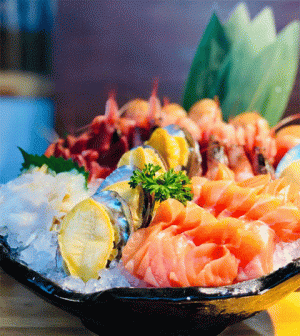- Finding Unshakable Power in a World That Wants to Pull Us ApartPosted 5 months ago
- What could a Donald Trump presidency mean for abortion rights?Posted 5 months ago
- Financial Empowerment: The Game-Changer for Women in Relationships and BeyondPosted 7 months ago
- Mental Health and Wellbeing Tips During and After PregnancyPosted 7 months ago
- Fall Renewal: Step outside your Comfort Zone & Experience Vibrant ChangePosted 7 months ago
- Women Entrepreneurs Need Support SystemsPosted 7 months ago
10 Best Sources for Omega-3 Fatty Acids

By Lisa Roth Collins | Naturallysavvy.com
Omega-3 fatty acids are essential fatty acids that are not made in our bodies, so we must get them from our diet. There are three forms: docosahexaenoic acid (DHA) and eicosapentaenoic acid (EPA), and alpha-linolenic acid (ALA). There is evidence from studies, according to the Mayo Clinic, that suggests consuming the recommended amounts of DHA and EPA through either fish or fish oil supplements lowers triglycerides, slows hardening of the arteries, and lowers blood pressure. In addition, they also may reduce the risk of heart attack, abnormal heart rhythms and strokes in people with cardiovascular disease.
How much of omega-3 fats are enough? The World’s Healthiest Foods cites the guidelines issued by the Workshop on the Essentiality of and Recommended Dietary Intakes for Omega-6 and Omega-3 Fatty Acids in 1999, which recommend that omega-3 fats should be at least two percent of the total daily calories. Someone consuming 2,000 calories a day would need to eat at least four grams of omega-3 fats. Two tablespoons of flaxseeds have 3.5 grams of omega-3 fats, and a four ounce serving of salmon has 1.5 grams of omega-3 fats.
Fish oils contain both DHA and EPA, while flaxseeds, certain oils, vegetables, and spices contain ALA. Where does that leave vegetarians and vegans who rely on ALA as their source of omega-3 fats? The World’s Healthiest Foods recommends they increase the amount of ALA-rich foods they consume to “ensure sufficient production of its important derivatives, EPA and DHA.” Our partners, Barlean’s, have high quality fish oil that has been third party tested for purity.
Here is Naturally Savvy’s top ten list of omega-3 rich foods:
1. Seafood: Seafood high in omega-3s include salmon, sardines, halibut, herring, mackerel, oysters, trout, tuna, shrimp, or scallops. There are a lot of great fish oil supplements, but if you prefer to eat the real thing, eat fish a few times a week to get sufficient EPA and DHA.
The rest of the list contains omega-3s with alpha-linolenic acid (ALA):
2. Flaxseed (meal and oil)
3. Walnuts
4. Broccoli, cauliflower, winter and summer squash
5. Green leafy vegetables such as kale, spinach and collard greens
6. Olive oil, walnut oil, mustard oil
7. Chia seeds
8. Hemp seeds
9. Basil or parsley (fresh)
10. Dried herbs such as cloves or oregano






